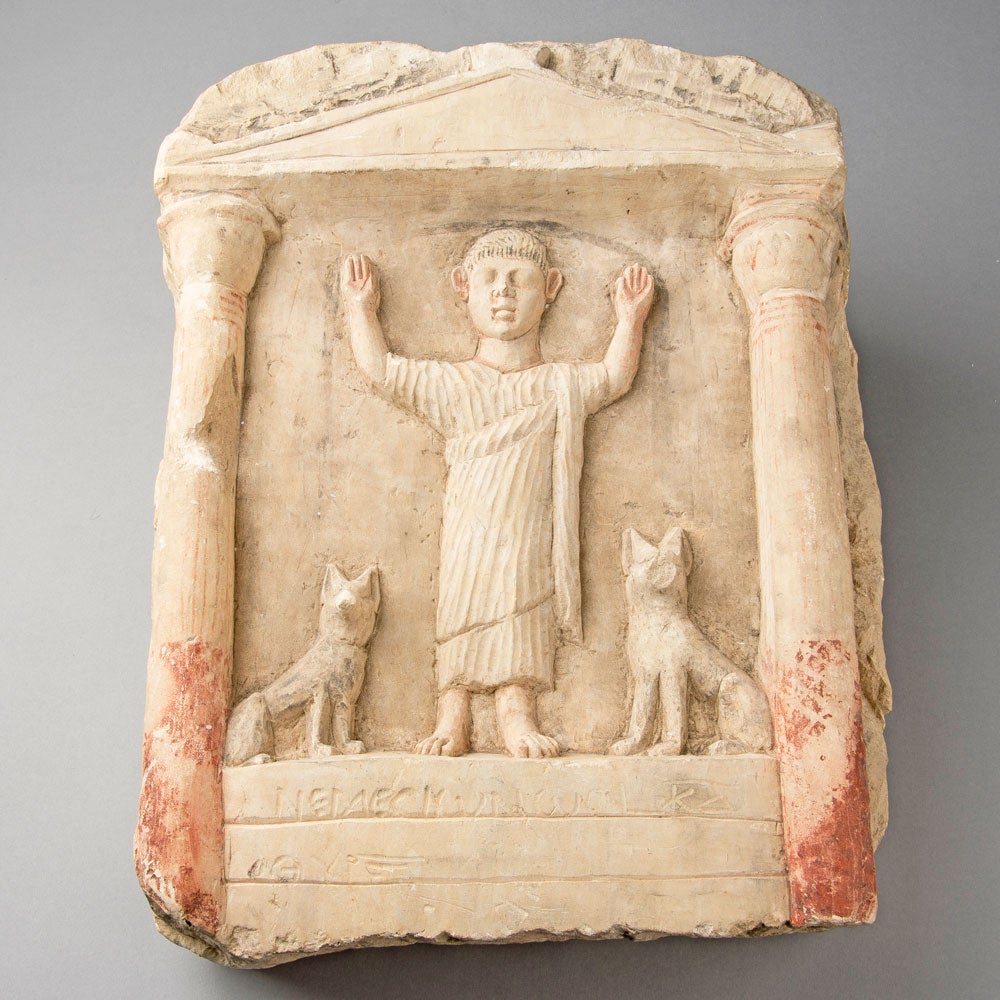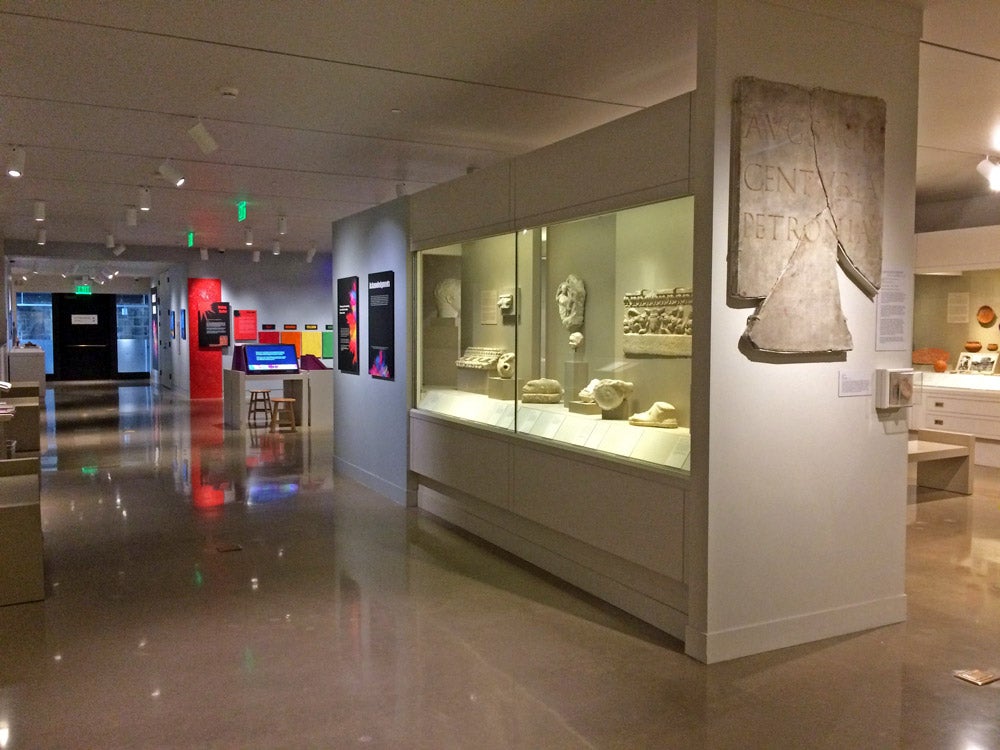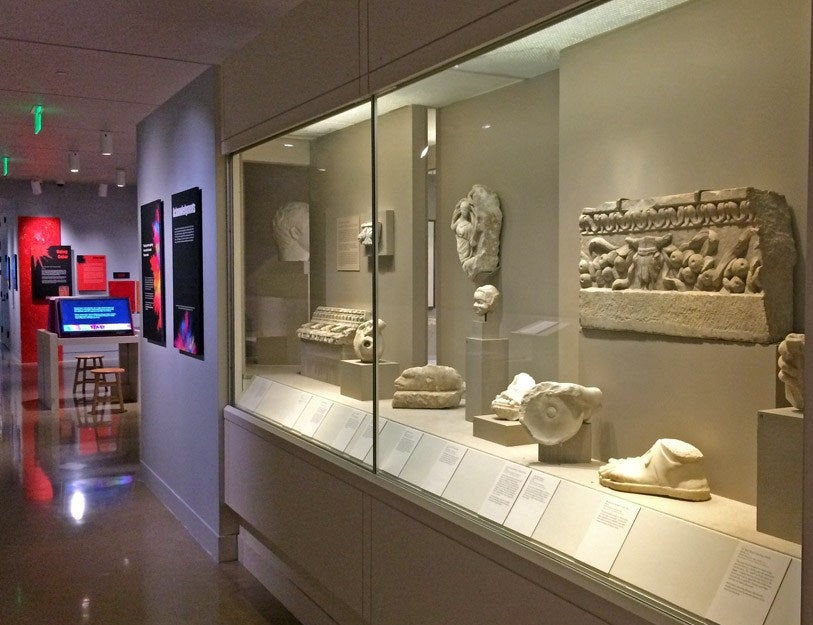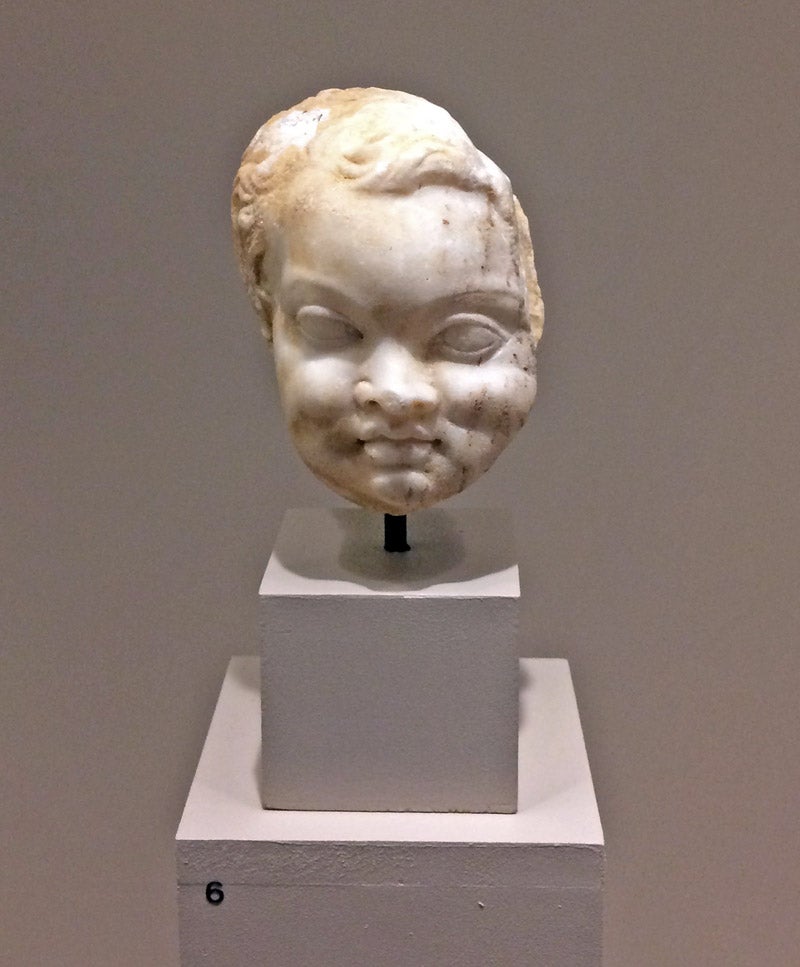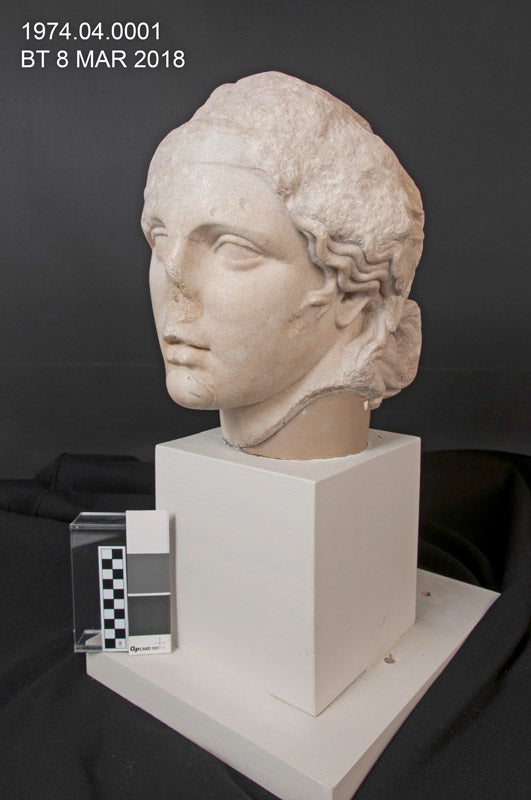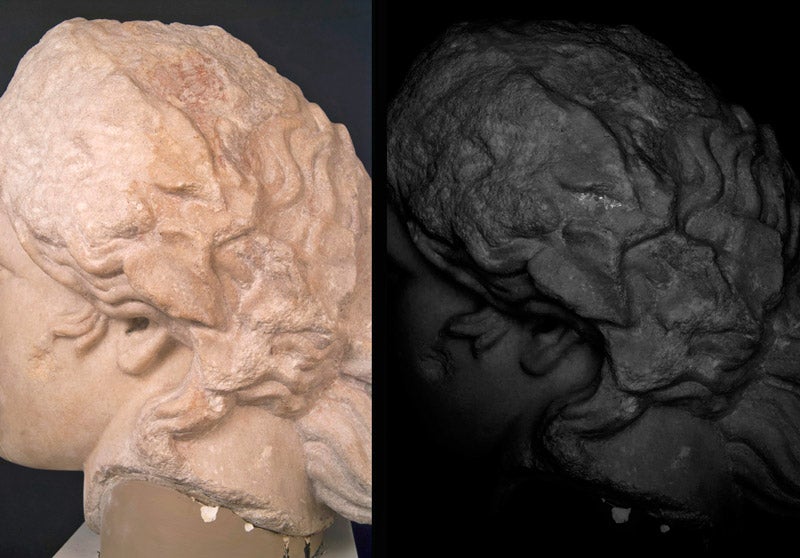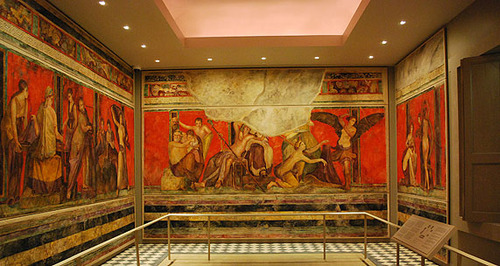
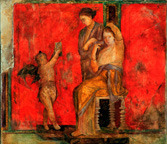
When it comes to the Kelsey Museum of Archaeology’s collections, not all artifacts are created equal. Some call out to us intellectually, others emotionally. To that end, we asked our curators to name their favorite Kelsey artifact or object. Here is the third in a series of seven.
BY ELAINE GAZDA, Curator of Roman and Hellenistic Collections, Kelsey Museum of Archaeology, University of Michigan
Favorite Artifact. “The Room of the Mysteries”, A Watercolor Representation 1925-27 by Maria Barosso
Why. “As a historian of Roman art, I have long been interested in sculptures and paintings of the Roman era that have been labeled in museums and textbooks as Roman copies after lost Greek originals. The watercolors painted by Maria Barosso fascinate me as beautiful illustrations of how copies of works of art become works of art in their own right and take on lives of their own. Barosso’s paintings are aesthetically appealing evocations of the Roman paintings that still remain on the walls of the Villa of the Mysteries in Pompeii, but they are also powerful visual statements of the ways in which this 20th century artist’s own aesthetic sensibility transformed the “original” she copied. In her correspondence with Professor Kelsey, Barosso expressed her desire to capture the original beauty of the Roman paintings. This required her to look beyond the damage that the Roman paintings had suffered from the volcanic eruption of AD 79 and centuries of burial and creatively re-imagine them in an undamaged state. In the process, Barosso’s own style inflected the Roman imagery with an early 20th-century Italian “accent.” Such subtle stylistic inflections can also be detected in ancient Roman works that emulate earlier Greek models.”
Background. The Villa of the Mysteries was situated in fertile farmland outside the walls of Pompeii, a short distance northwest of the city. It was discovered and partially excavated in 1909 by the owner of the land whose workmen first uncovered a lavishly adorned room containing murals that rapidly became famous. Later excavations in 1929-1930 by the archaeological authorities of Pompeii showed that approximately half of the villa had been devoted to agricultural and other utilitarian activities. The other half had been the proprietor’s residence, with splendidly decorated rooms, some with large windows, and terraces that provided vistas out to the countryside, the mountains, and the Bay of Naples.
Before the eruption of Mount Vesuvius in AD 79 forever altered the landscape, some of the best views from the Villa of the Mysteries were to be enjoyed from a large reception and dining room known to archaeologists as Room 5. This room preserves monumental murals that relate to the Greek god Dionysos. The Romans knew this god of acriculture, wine, and the bacchanal as Bacchus or Liber. The roughly life-size, mostly female figures appear to enact rituals related to the mystery cult of this god, whose sacred rites were known only to initiates. The Villa of the Mysteries takes its modern name from the imagery in this room. The identity of the Roman owner of the villa is not known.
The murals in the Villa of the Mysteries have few counterparts in Roman art. Coincidentally, the villa of Publius Fannius Synistor near Boscoreale, from which the Kelsey Museum’s farming equipment, mill, and hardware come, had wall paintings of comparable scale and quality. Most of them are now in the Metropolitan Museum of Art in New York and the National Archaeological Museum in Naples. The murals of the Villa of the Mysteries remain in their original context in Pompeii.
About the Watercolors. The paintings in the Villa of the Mysteries became famous with a few years of their discovery in 1909. Although the murals were made known to the world through published black and white photographs, color reproductions were not available at that time. In 1924, before the villa was fully uncovered, Professor Francis W. Kelsey commissioned a large-scale color replica for the University of Michigan so that scholars, students, and the public would be able to study and enjoy the murals in all their glory. He contracted with an Italian artist, Maria Barosso, who was the head archaeological artist for the Roman Forum and Palatine Hill excavations in Rome, to paint the replica.
Although Kelsey wanted a full-scale replica, Maiuri agreed to allow Barosso to paint only a five-sixths scale version. The end result, nonetheless, evokes the monumentality of the Roman paintings. Professor Kelsey intended also to reproduce the floor in an installation that he planned for a new gallery at the University of Michigan. Kelsey unfortunately died in May 1927, before the paintings arrived in Ann Arbor. In partial fulfillment of his plan to suggest the original effect of the ancient room, the Kelsey Museum created a reduced-scale version of the outer border of the Roman floor.
Find It. Climb the center stairs to the second floor of the William E. Upjohn Exhibit Wing. Make a slight turn left, then right directly toward the end of the building. Then turn right again into the recreated room that showcases the murals, just as Professor Kelsey envisioned so long ago. Lights will come on as you enter.
